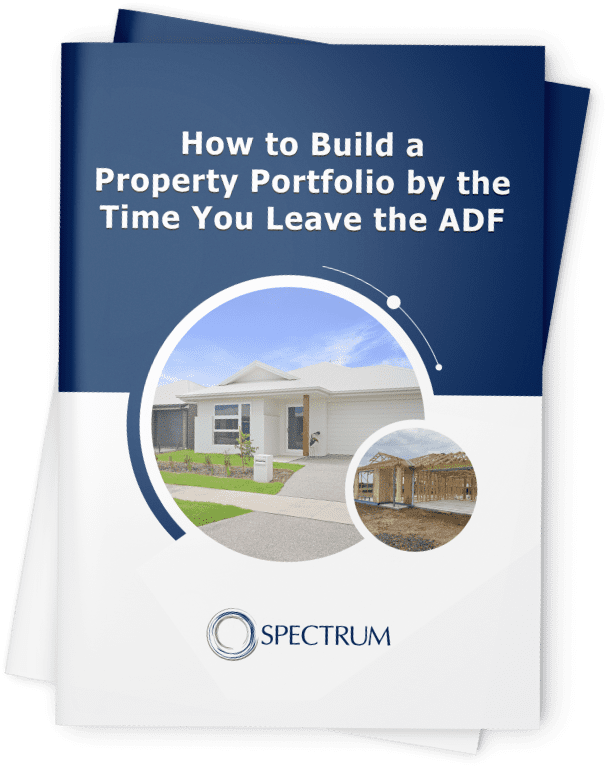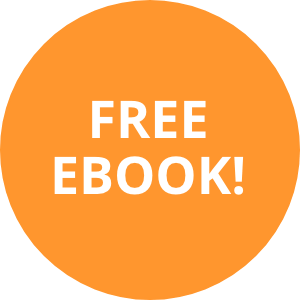Property Investment
Want to build wealth and secure your financial future?
More than 2 million Australians own an investment property. And it’s easy to see why when you take a look at some of the benefits:
- Long-term financial gains if your property increases in value
- Monthly rental income
- Tax breaks that can reduce your taxable income
But you won’t grow wealthy by picking just any old property. There are several critical decisions you have to make – particularly what to buy and where to buy it. Get these right and you can set yourself up for future financial success.
That leaves you with two options:
- Spend months researching different investment strategies and property markets
- Get expert advice from professional property investment advisers like Spectrum
7 reasons our property investment strategies are so successful
Investing in property is one of the biggest financial decisions you’ll ever make. At Spectrum, we set you up for success by:
Analysing the property market and tapping into the expertise of our respected partners to find you the best development opportunities
Helping you find the best investment locations by focusing on areas with growing populations, infrastructure developments and employment opportunities
Maximising rental returns by identifying locations with strong rental demand and working with the best local agents
Looking for tax advantages that can save you money, including depreciation allowances on building and fittings.
Considering different investment strategies, such as buying house & land packages to save on stamp duty and maximise your profits
Reviewing your financial position regularly, so you can reach your long-term goals
Keeping on top of all the latest industry news and research, so you don’t have to
A tax-efficient way to upgrade
Rob had an investment property that had grown in value.
He realised that if he sold that property now, he could use his capital gains to upgrade to a better investment property. Rob completed both transactions in the same financial year. He used some of the sale proceeds to pre-pay interest on his new loan for the following year.
This was a smart move for two reasons:
- Rob reduced his capital gains tax bill to $0, thanks to the different marginal tax rates for the two years in question
- He freed up income for the following year, giving him more disposable cash to spend on lifestyle choices
How negative gearing can reduce your tax bill
George bought an investment property for $400,000.
George quickly found tenants for the property, renting it out for an annual income of $20,000. His yearly expenses totalled $40,000, meaning the property was negatively geared. As a result, George was able to claim a $20,000 deduction in his tax return. This meant he was due to receive a $6,500 tax refund.
George chose to receive this refund in his pay each fortnight, to help him make his mortgage repayments. To see why this was a smart move, read Case Study 3.
Negative Gearing Example |
||
|---|---|---|
| Income – Rent (A) | $20,000 | |
| Interest paid on loan | $26,600 | |
| Rates – council & water | $1,800 | |
| Insurance | $700 | |
| Property Manager’s fees | $2,000 | |
| Depreciation – Building & Fittings | $7,500 | |
| Borrowing Costs | $1,400 | |
| Total expenses to be claimed (B) | $40,000 | |
| Tax deductible amount (B – A) | $20,000 | |
| Tax refund $20,000 @ 32.5% | $6,500 |
Paying off a property can be easier than you think
As it costs George only $88 per week to own…
As we saw in Case Study 2, George purchased an investment property for $400,000. Thanks to negative gearing, he received a tax refund of $6,500. George applied to the Australian Taxation Office to receive this tax refund through his pay – allowing George to reduce his tax instalments. George then put his tax refund towards his mortgage repayments.
George’s annual holding costs were only $4,600, or $88 per week. That’s because:
- Rental income covered 64% of the investment property’s costs
- The tax refund covered 21% of the costs
- So George had to pay only 15% of the costs
George invested any additional income he had left over (after paying for the property) in shares. Growth assets like shares can be a great way of generating high returns, helping you build more wealth and secure your financial future.
Negative Gearing Example |
||
|---|---|---|
| Rental Income | $20,000 | |
| Tax Refund from negative gearing | $6,500 | |
| Total Income (A) | $26,500 | |
| Interest paid on loan | $26,600 | |
| Rates – council & water | $1,800 | |
| Insurance | $700 | |
| Property Manager’s fees | $2,000 | |
| Total Expenses (B) | $31,100 | |
| Annual cost of the property to George. B-A=C | $4,600 |
Using equity to build a property portfolio
George’s $400,000 investment property grew in value by 5% each year…
After 10 years, George’s investment property (see Case Study 2 and Case Study 3) had significantly increased in value. That allowed him to use the equity to buy another investment property.
Should you buy a home or an investment property?
George’s friend Kevin thought ‘rent money was dead money’
George and his friend Kevin both paid weekly rent of $325. Kevin thought he would be better off buying his own home, so he purchased a nearby owner-occupied property for $400,000. George decided to continue renting, but to purchase an interstate investment property for $400,000. He sought out quality locations where he could get the best long-term growth.
Both George and Kevin had saved only enough to pay a 5% deposit plus transaction costs. So how much did they each pay over the next year? Let’s find out.
Costs Over the Next Year |
Kevin |
George |
|---|---|---|
| Loan repayments (based on a $380,000 loan repayable over 30 years @ 6.5%) | $29,274 | $29,274 |
| Rates | $1,800 | $1,800 |
| Insurance | $700 | $700 |
| Property Manager’s costs | – | $2,000 |
| Annual cost of living in his own property | $31,774 | $33,774 |
| Less: Saving from not paying rent – $325 x 52 | $16,900 | |
| Less: Rent Received from tenants | $20,000 | |
| Less: Tax Refund from negative gearing | $6,500 | |
| Additional cost of moving from renting to owning | $14,874 | $7,274 |
Although they both owned a $400,000 property, Kevin had to contribute more than $7,600 extra per year to live in his property.
George then decided to switch to an interest-only investment mortgage to make his loan more tax-effective. That meant he was now paying even less to hold his investment property. With this extra cash and the equity he’d built up from his property, George was able to buy a second investment property.
Should you choose principal-and-interest or interest-only?
George wanted to grow his property portfolio
Having seen the value of his first investment property grow, George wanted to add to his property portfolio. But repaying a principal-and-interest loan was eating up all his disposable income.
So George decided to switch an interest-only loan. Interest payments are tax-deductible, so this maximised his refund. It also freed up $3,836 per year in cash that had previously been put towards the principal repayments.
George chose to invest this extra money in other growth assets. Over time, this pot of money grew in value, allowing him to buy a second investment property.
P&I |
Interest Only |
|
|---|---|---|
| Rent | $20,000 | $20,000 |
| Loan Repayments | ($30,336) | ($26,600) |
| Cash Outgoings | ($4,500) | ($4,500) |
| Tax Refund | $5,900 | $6,000 |
| Cost of Holding Property | ($8,936) | ($5,100) |
| Amount Invested in Other Assets | $0 | $3,836 |
| Total Outlay | $8,936 | $8,936 |
Why capital growth trumps yield
Capital growth is the amount by which your property increases in value over time, whereas rental yield is your annual rent expressed as a percentage of your purchase price.
But what matters more when you’re picking a suitable investment property: rental yield or capital growth?
At Spectrum, we believe strong capital growth is the key to successful property investment.
To see why, just look at the graph below. This charts a hypothetical $400,000 property delivering a 15% per annum return over 25 years.
Property A (the blue line) was selected based on producing high capital growth. Its annual return was made up of 10% capital growth and 5% rental yield.
In contrast, property B (the red line) was selected based on its high rental yield. Its annual return was made up of 10% rental yield and 5% capital growth.
After 25 years, the total return was:
- Property A = $1.1 million
- Property B = $390,000




